
Childhood is perhaps the most essential period for a child’s cognitive, social, physical, and emotional development.
Strong listening skills are integrated with all four aspects of development since they play a crucial role in learning. A child’s ability to actively listen drastically improves their communication skills at home, at school, and in every other setting.
In the past, people assumed that misunderstandings were a consequence of poor hearing or reading. However, studies provided that passive listening accounts for nearly 60% of all communication issues.
As a result, active listening has become an important aspect of personal communication as it involves listening with all senses instead of just one.

So, without further ado, let’s dive deeper into this concept and explore the key benefits of active listening for children. We’ll also share common techniques and examples for more clarity.
What is Active Listening?
Active listening is a communication technique that involves carefully and fully understanding the words spoken by another person.
It is different from passive listening, which involves simply hearing what is being said but not truly comprehending or considering it.
Active listening requires taking in the speaker’s words as well as their meaning, feelings, and underlying thoughts that might not be explicitly stated.
Not only does active listening show respect for the speaker, but it can also lead to more effective communication overall. In this article, we’ll discuss the benefits of active listening, techniques for doing it effectively, and provide examples of how it can be applied in everyday life.
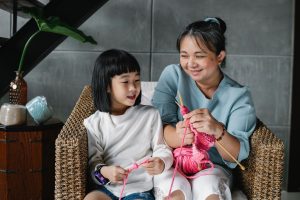
What’s the Difference Between Active and Passive Listening?
Before we dive into the importance of teaching effective listening skills, we need to understand how active listening is different from passive listening.
Active listening involves paying full attention to a speaker and listening to understand. It requires listeners to focus on the speaker without responding right away.
For instance, in a classroom, students can be taught to wait their turn and consider what other students have to say before stating their opinions. Passive listeners, in contrast, don’t focus on the speaker and usually multitask.
For instance, it’s quite common for students to text during class, heckle other students, or even work when they’re supposed to be listening to their teachers.

Importance of Active Listening
Active listening for children is a powerful skill that can have positive impacts in many key areas of their early life. Below are the key benefits you should know about:
Building Trust in Relationships
Trust is an essential commodity in a child’s early years. Active listening is one the best tools anyone can use to strengthen their relationship with children.
For instance, consider your students. Are they disengaging from what you’re saying in the classroom? Are they reluctant to open up and share things with you?
These are all signs that your students may not trust you. By allowing them to speak openly and express themselves, you can reestablish trust and improve their learning outcomes.
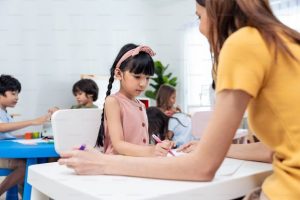
Conflict Resolution
Children are likely to get into fights and other forms of conflict, especially in school or outdoors. They can misunderstand each other and only see things from their perspective.
So, you have to step up and encourage them to see issues from different viewpoints. More importantly, you have to teach them to recognize other people’s feelings even if they don’t agree with them.
Simply put, active listening can help you find a resolution and stop conflicts from escalating.
Complete Information
The core objective of active listening is to hear the complete message and absorb more specific details from the engagement.
For instance, if you’re instructing students in your classroom, they should be able to recall the details more easily.
When they have the complete information, they can carry out tasks more efficiently and accurately.

Problem Identification and Anticipation
Active listening helps listeners get clarity to ensure they understand the speaker’s message correctly.
So, if a problem exists, they’re more likely to identify or anticipate it before it surfaces and devise a counter strategy proactively.
Knowledge Enhancement
Active listening is one of the most powerful learning tools for children, especially during their early development years.
It allows them to focus deeply on what they’re doing which can help them assimilate, understand, and recall information better.
Active listening also increases their curiosity and prompts them to focus more on understanding the full picture.
Leadership Skills
Leadership might not be a skill every child is born with. However, it’s a skill any child can learn from a young age with active listening.
Not only is it empowering, but it also builds confidence and authority, especially in team exercises and sports.
Leadership skills also help children communicate better with elders and expand their perspectives.

7 Active Listening Techniques
Active listening implies that you are making an effort to listen to others, not just letting your ears do the work. Hence, it involves the use of different techniques that can help you become better, including:
1. Complete Presence
The first and most important technique you can adopt is learning to be fully present when engaged in a conversation.
This way, you can concentrate on what the other person is saying. For instance, when speaking to students, you can ask them to stop taking notes and focus on you.
On the flip side, you can put away your phone while talking to them to ignore distractions.
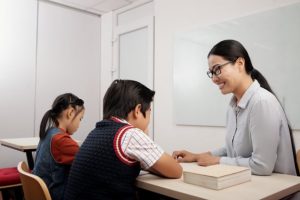
2. Patience
Patience is another important active listening technique. Children are likely to interrupt others simply because they don’t understand when to jump into a conversation.
Many teachers use dialogues to simulate real-world communications. This allows students to think about what they’re saying and reduces their eagerness to speak quickly.
More importantly, it improves discipline and helps children listen to understand, not respond. In other words, they shouldn’t be preparing a reply while the other person is speaking.
Instead, they should listen carefully and then take a moment to think about what to say.
3. Withholding Judgment
As adults, we need to understand that children can and will say the wrong things from time to time.
Hence, we must remain neutral and non-judgemental in our responses to improve their confidence and prevent them from hiding their thoughts. Children want to feel safe when they speak to you.
Hence, the last thing you want is to shame, criticize, or mistreat them.
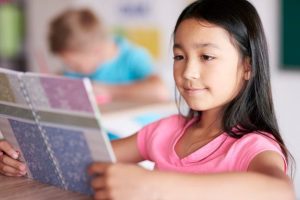
You can do this by improving your emotional intelligence and practicing acceptance. Children will make mistakes. Punishing them for it will take away their confidence and put them in a mental prison.
4. Asking Expansive Questions
Traditional parents and teachers ask their children a lot of yes and no questions. Children being children, often respond with dead-end answers.
Unfortunately, this doesn’t keep the conversation flowing, making it unhelpful for active listening. Ideally, you should be asking questions that bring concise but descriptive responses.
For instance, you can ask children to explain what happened in detail, share their viewpoints, and even ask for advice.
5. Non-Verbal Communication
According to Very Well Mind, nearly 65% of all communication is unspoken.
Hence, an essential aspect of active listening involves paying attention to verbal cues to learn more about what a person is saying. Their expressions, gestures, attitude, and emotions can provide a lot more details than words, in many cases.

6. Eye Contact
Maintaining eye contact is another important technique that implies you’re fully present and listening to what children are saying.
It shows that you value them and aren’t distracted by anything else. However, you don’t want too much eye contact and the conversation becomes uncomfortable.
Ideally, you should contact for a few seconds and look away for a brief moment (and repeat).
7. Reflection
Another excellent technique you can use to help children improve their active listening skills is by asking them to repeat what the other person said.
You can take a step further by asking them to replicate their emotions as well. One way to do that is via paraphrasing.
For example, if your student says they’re upset about something another student said, you can empathize with them by summarizing what you’ve heard and acknowledging the speaker’s words and emotions.

Active Listening Example
In theory, active listening seems to be quite straightforward. However, many people don’t know what it looks like. Therefore, here is an example of a conversation in which we’ve used multiple active listening techniques:
Your students’ football game just ended. You have to take them back to the classroom for the next period.
One of the students comes back crying and complains about another student hitting him and calling him names. You are tempted to continue walking and dealing with it later.
However, you stop for a second, turn to your student, and talk to him.
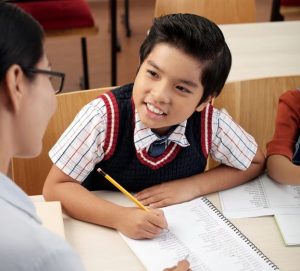
Jeanette (Teacher): I’m so sorry, Ang. Are you hurt? Tell me what happened.
Ang Peng (Student): I’m okay. We lost the game and got into a fight. He said it was my fault and that I couldn’t play.
Jeanette: I’m sorry. That must’ve been terrible to hear. I’ll talk to him as soon as we get back to the classroom.
Ang Peng: Thank you.
Jeanette: Also, it’s not your fault. Winning and losing is a part of the game. You do both together as a team.
In the classroom:
Jeanette: Peter, can I speak with you for a minute? I heard you had a fight with Ang and blamed him for the loss. That’s not really nice. He’s your teammate.
Peter: It’s his fault. They scored twice because of him. I was just mad that we lost.
Jeanette: I admire your spirit and hunger for winning. In fact, I see a potential captain in you. However, you need to become a better team player and accept that losing is also a part of the game.
So, instead of blaming Ang and getting into a fight, why don’t you help him improve? I know you can do it.
Peter: You’re right. I guess I was wrong. I’m sorry.
Jeanette: That’s alright, Peter. I’ve already spoken to Ang. I understand it’s going to be difficult to apologize but I promise you it will make both of you feel better. So, hug it out and get ready for the next game.
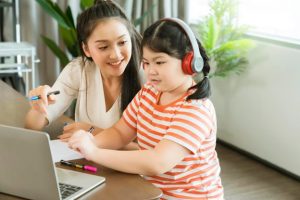
Conclusion
Active listening has numerous benefits for children, ranging from improved understanding between speakers and listeners to increased confidence during conversations.
Unlike passive listening, it goes beyond simply hearing what someone says and getting a better grasp of the context, nuances, and emotions.
Using the techniques and examples above, you can teach children active listening skills faster and proactively improve their communication skills, self-awareness, and comprehension capabilities.
